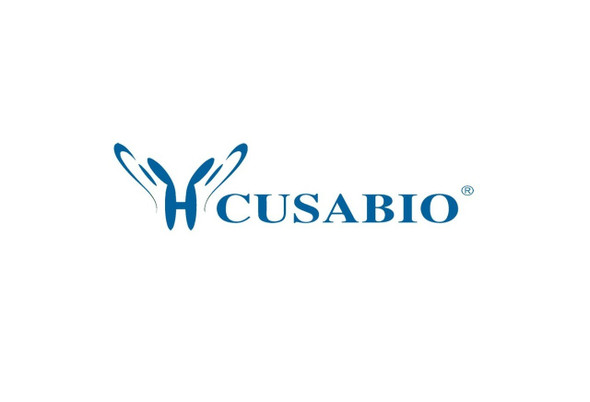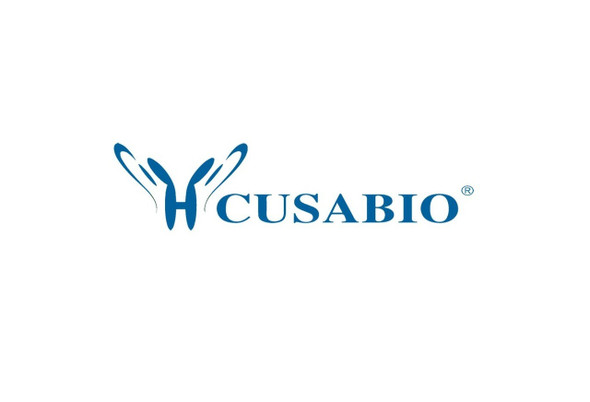Cusabio Human Recombinants
Recombinant Human V-set domain-containing T-cell activation inhibitor 1 (B7H4), partial | CSB-EP801822HUe0
- SKU:
- CSB-EP801822HUe0
- Availability:
- 13 - 23 Working Days
Description
Recombinant Human V-set domain-containing T-cell activation inhibitor 1 (B7H4), partial | CSB-EP801822HUe0 | Cusabio
Alternative Name(s): B7 homolog 4 ;B7-H4B7h.5Immune costimulatory protein B7-H4Protein B7S1T-cell costimulatory molecule B7x
Gene Names: B7H4
Research Areas: Immunology
Organism: Homo sapiens (Human)
AA Sequence: IIGFGISGRHSITVTTVASAGNIGEDGILSCTFEPDIKLSDIVIQWLKEGVLGLVHEFKEGKDELSEQDEMFRGRTAVFADQVIVGNASLRLKNVQLTDAGTYKCYIITSKGKGNANLEYKTGAFSMPEVNVDYNASSETLRCEAPRWFPQPTVVWASQVDQGANFSEVSNTSFELNSENVTMKVVSVLYNVTINNTYSCMIENDIAKATGDIKVTESEIKRRSHLQLLNSKA
Source: E.coli
Tag Info: N-terminal GST-tagged
Expression Region: 26-258aa
Sequence Info: Partial
MW: 52.6 kDa
Purity: Greater than 90% as determined by SDS-PAGE.
Relevance: Negatively regulates T-cell-mediated immune response by inhibiting T-cell activation, proliferation, cytokine production and development of cytotoxicity. When expressed on the cell surface of tumor macrophages, plays an important role, together with regulatory T-cells (Treg), in the suppression of tumor-associated antigen-specific T-cell immunity. Involved in promoting epithelial cell transformation.
Reference: B7-H4, a molecule of the B7 family, negatively regulates T cell immunity.Sica G.L., Choi I.-H., Zhu G., Tamada K., Wang S.-D., Tamura H., Chapoval A.I., Flies D.B., Bajorath J., Chen L.Immunity 18:849-861(2003)
Storage: The shelf life is related to many factors, storage state, buffer ingredients, storage temperature and the stability of the protein itself. Generally, the shelf life of liquid form is 6 months at -20?/-80?. The shelf life of lyophilized form is 12 months at -20?/-80?.
Notes: Repeated freezing and thawing is not recommended. Store working aliquots at 4? for up to one week.
Function: Negatively regulates T-cell-mediated immune response by inhibiting T-cell activation, proliferation, cytokine production and development of cytotoxicity. When expressed on the cell surface of tumor macrophages, plays an important role, together with regulatory T-cells (Treg), in the suppression of tumor-associated antigen-specific T-cell immunity. Involved in promoting epithelial cell transformation.
Involvement in disease:
Subcellular Location: Cell membrane, Single-pass type I membrane protein
Protein Families: Immunoglobulin superfamily, BTN/MOG family
Tissue Specificity: Overexpressed in breast, ovarian, endometrial, renal cell (RCC) and non-small-cell lung cancers (NSCLC). Expressed on activated T- and B-cells, monocytes and dendritic cells, but not expressed in most normal tissues (at protein level). Widely expressed, including in kidney, liver, lung, ovary, placenta, spleen and testis.
Paythway:
Form: Liquid or Lyophilized powder
Buffer: If the delivery form is liquid, the default storage buffer is Tris/PBS-based buffer, 5%-50% glycerol. If the delivery form is lyophilized powder, the buffer before lyophilization is Tris/PBS-based buffer, 6% Trehalose, pH 8.0.
Reconstitution: We recommend that this vial be briefly centrifuged prior to opening to bring the contents to the bottom. Please reconstitute protein in deionized sterile water to a concentration of 0.1-1.0 mg/mL.We recommend to add 5-50% of glycerol (final concentration) and aliquot for long-term storage at -20?/-80?. Our default final concentration of glycerol is 50%. Customers could use it as reference.
Uniprot ID: Q7Z7D3
HGNC Database Link: HGNC
UniGene Database Link: UniGene
KEGG Database Link: KEGG
STRING Database Link: STRING
OMIM Database Link: OMIM










